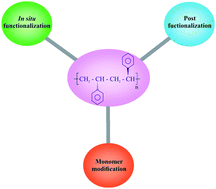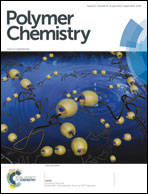Recent progress in the chemical modification of syndiotactic polystyrene
Abstract
It is an unquestionable fact that syndiotactic polystyrene (sPS) has stimulated great interest on the basis of its importance in basic scientific research and potential industrial applications. It is regarded as a new low-cost engineering polymer with various desirable properties, such as a high melting temperature (270 °C), fast crystallization rate, low dielectric constant, excellent mechanical properties, low permeability to gases, outstanding dimensional stability, excellent processing characteristics at a very low melt viscosity, and good chemical resistance. However, some drawbacks of sPS restrict its practical use: its brittleness, a disadvantage in applications where mechanical properties are important; the absence of polar groups for adhesion to substrates and compatibility with polar polymers; and the need to process sPS at high temperatures due to its high melting points. Thus, modification of sPS is necessary to expand its applications, and has been the subject of much investigation. This review provides a snapshot of recent progress in the chemical modification of syndiotactic polystyrene, including in situ functionalization of sPS (syndiospecific copolymerization of styrene with a second monomer and catalytic chain transfer to a chain transfer agent), post-functionalization of sPS (introduction of polar groups into sPS, graft or block copolymerization onto sPS, and hydrogenation of sPS or its copolymers) and monomer modification.


 Please wait while we load your content...
Please wait while we load your content...